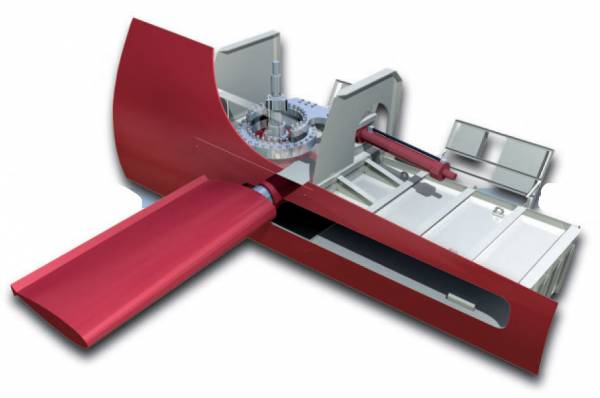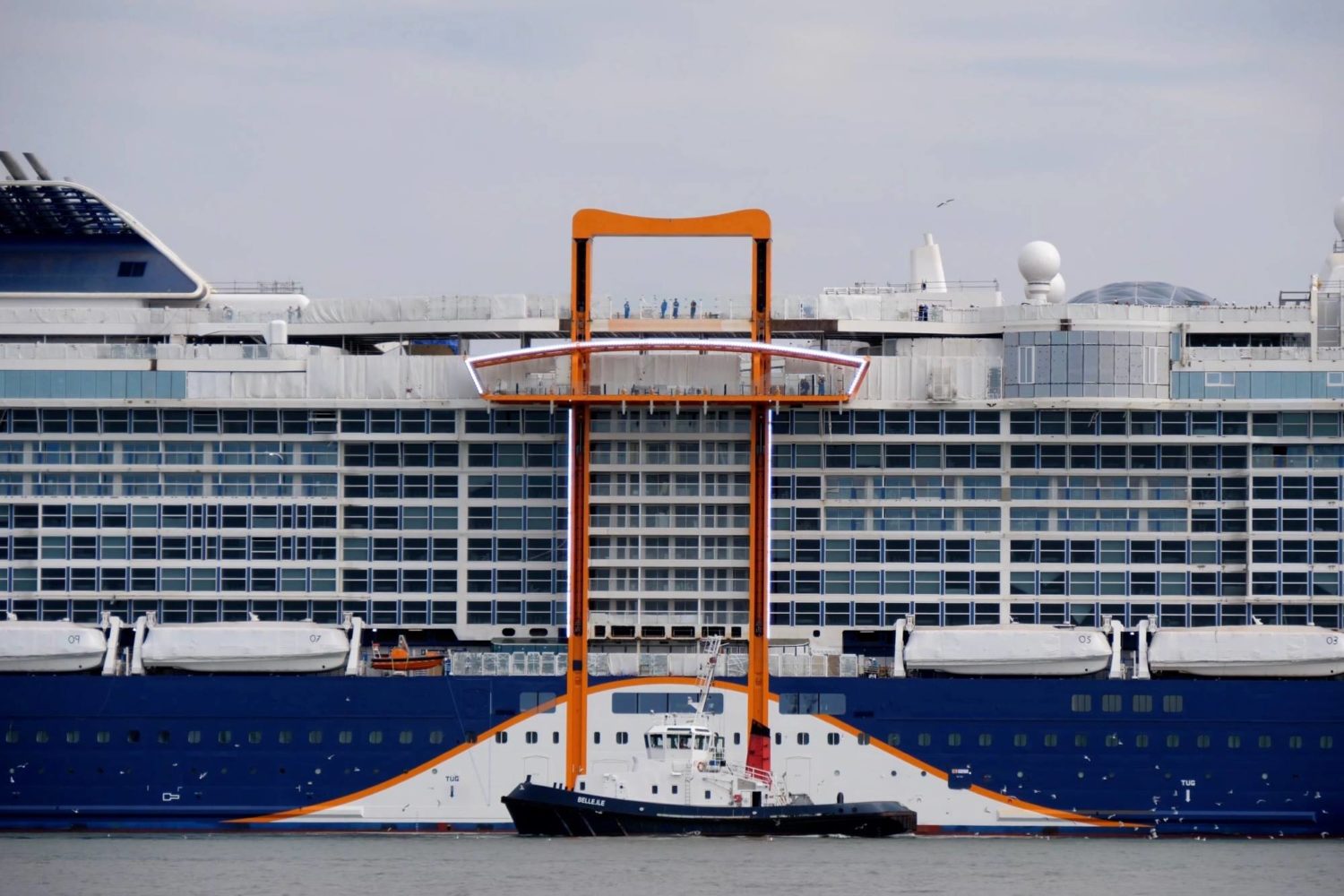Table Of Content

Passive stabilizers are very efficient and do not require any power to operate. However, they are not as effective as active stabilizers at reducing roll, pitch, and yaw. They make it possible for people to enjoy a smooth and comfortable journey, even in the most challenging conditions.
Stabilizers and Royal Caribbean Ships
Imagine trying to enjoy a gourmet meal in a restaurant that is constantly swaying from side to side. Stabilizers ensure that passengers can fully utilize and enjoy the ship’s amenities without any disruptions caused by excessive motion. This not only enhances the overall cruise experience but also helps to protect the investments made by cruise ship operators in these onboard facilities. Furthermore, stabilizers contribute to the overall stability of the ship, making it less susceptible to capsizing or listing. This is particularly important during extreme weather events or unforeseen circumstances that may cause the ship to encounter large waves or strong winds. The increased safety provided by stabilizers gives passengers and crew members peace of mind, allowing them to fully enjoy their cruise experience.
The Role of Fins and Gyroscopes in Stabilization
Poseidon Expeditions to fit Rolls-Royce stabilisers to Sea Spirit - Cruise and Ferry
Poseidon Expeditions to fit Rolls-Royce stabilisers to Sea Spirit.
Posted: Thu, 05 Apr 2018 07:00:00 GMT [source]
With a solid understanding of hydraulic stabilizer systems, we can now delve into the comparison between active and passive stabilization methods. Without proper stabilization, the ship would be prone to excessive rolling and pitching, leading to discomfort and even potential accidents. We’ll also discuss the benefits they bring to the cruise industry and the challenges they face in their quest for stability. From the design and construction of these ships to the expertise of the crew operating them, we’ll leave no stone unturned. Classification societies impose specific guidelines and standards for the design, construction, and maintenance of stabilizer systems. Cruise ship operators must adhere to these guidelines and regularly demonstrate compliance through inspections and audits conducted by classification society surveyors.
Delightful Dining Upgrades: Oceania Cruises’ Culinary Enrichments
The stability of a cruise ship is crucial for the safety and comfort of its passengers and crew. It is the result of a complex interplay of factors, including the ship’s design, weight distribution, and stability systems. Understanding these principles will give you a newfound appreciation for the intricate nature of cruise ship construction. Based on the source of energy utilized to stabilize a vessel, the systems can be divided into active and passive stabilizers. The third type of stabiliser used on modern cruise ships is a gyroscopic stabiliser.
Ruling the waves: Cunard's new liner - The Guardian
Ruling the waves: Cunard's new liner.
Posted: Sat, 09 Oct 2010 07:00:00 GMT [source]

At its core, stability refers to the ability of a ship to maintain its equilibrium and resist capsizing or rolling over in the water. So buckle up and get ready to embark on a journey into the fascinating world of cruise ship stability. Let’s uncover the secrets that keep these floating wonders upright and ensure smooth sailing for all who step aboard. It is a floating city, a self-contained world that seems impervious to the turbulent forces of the ocean.
In an ideal scenario, the center of gravity and the center of buoyancy should be aligned vertically. When the ship is at rest, the weight of the ship is balanced by the buoyant force, resulting in a stable equilibrium. However, when external forces like waves or wind act on the ship, the balance can be disrupted. To understand how a cruise ship stays upright, we must first explore the basic principles of stability.

Stabilizers and Carnival Ships
By adding ballast, the ship’s weight is increased, lowering the center of gravity and enhancing stability. If the metacentric height is too low or negative, the ship becomes unstable. When the ship heels, the center of gravity shifts to one side, causing the metacenter to shift downward. This results in a diminishing righting moment, making it difficult for the ship to return to an upright position. It is highly effective at slower speeds and since there is no additional structure protruding out of the vessel there are no additional drag forces created on the hull making it more efficient.
Stabilizers and Active Systems
These fundamental principles, along with careful design considerations, work together to ensure that a cruise ship remains stable and safe throughout its voyages. Passive stabilizers are less common than active stabilizers, but they can be just as effective. Passive stabilizers are fixed to the ship’s hull and use the ship’s own motion to create a stabilizing force.
This active response to the ship’s movement allows for precise and real-time stabilization, ensuring a smoother sailing experience for passengers regardless of the sea conditions. Overall, bilge keels are an essential component of a cruise ship’s stability system. They contribute to the reduction of rolling motion, improve maneuverability, enhance structural integrity, and offer protective benefits. Together with other stabilization systems, bilge keels work to provide a safe and comfortable cruising experience for passengers and ensure the vessel remains stable even in challenging sea conditions. Moving on from the real-life examples of stabilization in action, let’s now delve into the future of cruise ship stabilizers and the exciting evolution of ship stability technology. As we strive for continuous improvement, evolutionary advancements are being made in this field, pushing the boundaries of what is possible.
One of the advantages of fixed stabilizers is their simplicity and reliability. Since they are permanently installed on the ship’s hull, there is no need for any mechanical or hydraulic movement. As mentioned earlier, heavier components such as engines, fuel tanks, and machinery are strategically positioned in the lower levels of the ship to lower the center of gravity.
The Miso Ramen Soup is the perfect choice for those seeking a warm and comforting meal on a chilly day. With these new soups and salads, Oceania Cruises continues to provide guests with a diverse and delicious dining experience. Therefore, it is vital for cruise ship operators to prioritize the development and implementation of environmentally friendly stabilization technologies.
Cassidy Gifford's acceptance as godmother signifies the intersection of the entertainment and travel industries, underscoring Carnival's recognition of her contributions. This announcement highlights the deep ties between entertainment icons like the Giffords and the travel sector, emphasizing the influence of family connections on industry partnerships. Grilled Salmon Salad is a flavorful and healthy option available among the new soups and salads on the expanded menu. The salad features a perfectly grilled salmon fillet, cooked to perfection with a smoky charred exterior and a tender, flaky interior. The salmon is served on a bed of crisp mixed greens, accompanied by an array of fresh vegetables and a tangy vinaigrette dressing.
One of the main challenges is the size and weight of the stabilizer systems, which can affect the ship’s overall stability and maneuverability. Additionally, these systems may not be as effective in extreme weather conditions, such as high winds or rough seas. They are strategically placed within the ship’s hull to detect any tilting or rolling motions. When the gyroscopes sense a deviation, they send signals to the ship’s stabilizer system, which then adjusts the fins accordingly. Cruise ships are massive vessels that generate significant waves as they sail through the water. These waves, commonly known as wake, can have detrimental effects on marine ecosystems and coastal areas.
Tiana’s Place truly brought the spirit of New Orleans to life, creating an unforgettable dining experience. The jazz band in Tiana’s Place set the perfect mood with their soulful tunes, transporting us to the vibrant streets of New Orleans. The energetic table-winding parade encouraged kids and adults alike to join in the celebration, creating a joyous and interactive dining experience. Though many fin systems are only minimally effective at zero or low speeds, Quantum Zero Speed™ technology has greatly advanced the performance at anchor or slow speeds. The number of stabilizers installed also affects the effectiveness of the system. The more stabilizers that are installed, the greater the restoring moment and the more effective the system will be.

No comments:
Post a Comment